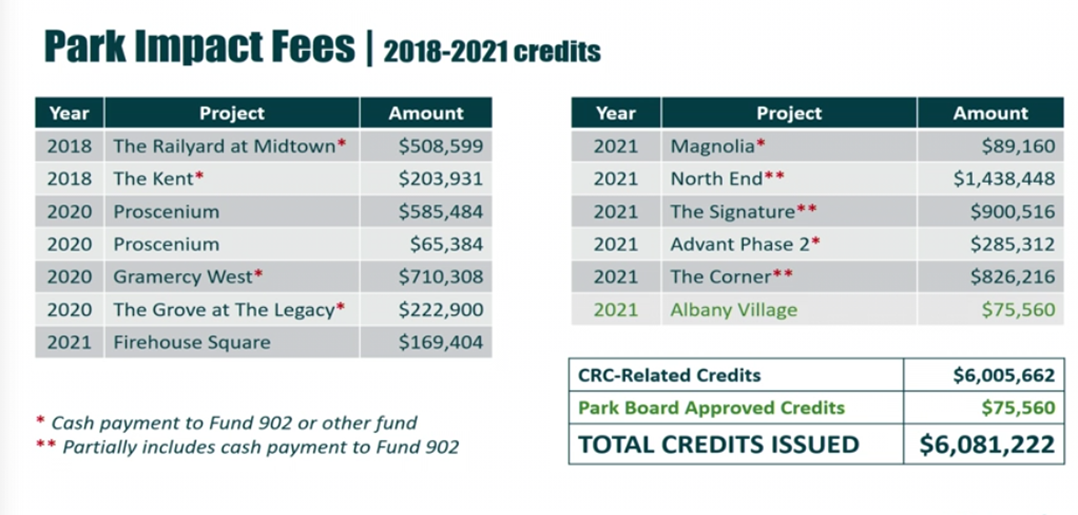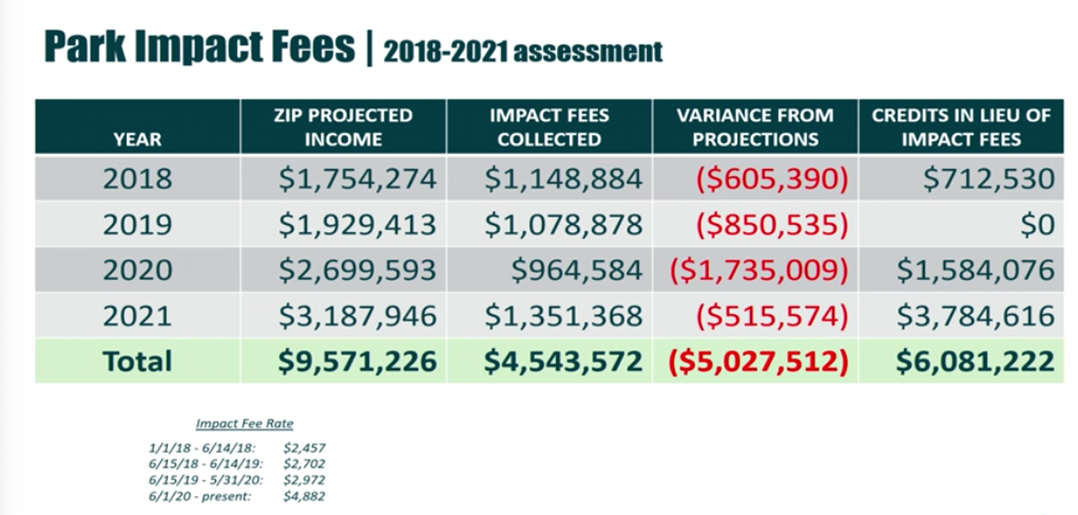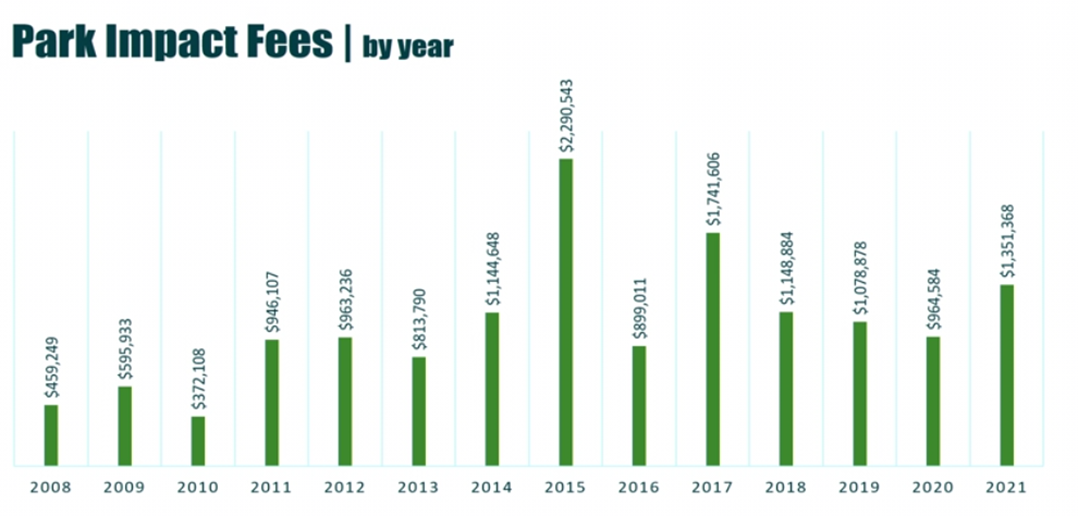
Since 2018, more than $6 million in impact fees that would have been designated to expand Carmel Clay Parks & Recreation parks have instead supported Carmel Redevelopment Commission parks and open space projects.
An impact fee of $4,882 is collected for each new residential unit built in Carmel to fund park improvements directly related to increasing capacity to serve a growing population. However, the City of Carmel’s Board of Public Works has been permitted since 2010 to approve credits in lieu of impact fees, which allow a person or entity to finance, construct or dedicate park and recreation infrastructure for public use and ownership instead of paying the fee.
The Carmel City Council’s finance committee met Jan. 12 to review the process for approving credits in lieu of impact fees and the effect the credits have had on CCPR. Nearly all the credits have been approved by the BPW since 2018. Projects they’ve helped fund include a public plaza at the Proscenium and Monon Boulevard improvements. The BPW approved some funds without specific projects identified.
For the first time in 2020, more funds were issued as credits for CRC projects than collected by CCPR as impact fees. In 2021, CCPR received nearly $1.4 million in impact fees, with nearly $3.8 million diverted for other projects through credits.
CCPR Director Michael Klitzing told the council that he knew credits were being considered by the BPW, although he said he was not made aware of each credit request before or after its approval.
“The impact fee varies so much from year to year, so we bank the money until we’re in a position to do a phased development of one of our parks,” Klitzing told the committee. “It’s never been a funding source I can completely with confidence determine what we’re going to have (come in) over the next three years, so we’re grateful we’re receiving anything to contribute toward the parks system.”
CRC Director Henry Mestetsky said that CCPR has historically focused its efforts on suburban parks and has not expressed interest in developing the types of urban parks that have recently been added in the city’s core. He said it makes sense for the credits in lieu of impact fees to support projects near the new developments that generated them, such as the Railyard mixed-use development dwellings helping to fund improvements to the adjacent Monon Boulevard.
“We want all of our citizens to equally enjoy our parks, so it’s not fair for a bunch of new units being built in the central core to then be deprived of parks infrastructure,” Mestetsky said. “Without the redevelopment commission and engineering (department) building our urban parks in the center, our downtown dwellers would have to drive to the east or west side or Monon Center to experience any parks.”
Klitzing said the urban parks developed by the CRC have been well done and an asset to the community, but that CCPR officials had not been asked if they were interested in helping to develop the parks.
Council President Kevin “Woody” Rider, who is not on the committee but attended the meeting, said he doesn’t fault the CRC or CCPR for how impact fees have been handled in the past, but he’d like to see increased communication in the future.
CCPR expected its revenue from impact fees to dwindle as the city’s growth slowed, but a greater financial challenge looms with the payoff of the Central Park bond in 2025. Clay Township leaders issued the bond in 2004, just in time for it to be factored into the formula for distributing local income taxes, which led to the township’s share of income tax distributions being higher during the life of the loan. The township committed to using funds generated this way for park improvement projects.
CCPR has been receiving more than $3 million annually thanks to the old distribution formula, but the total is expected to shrink dramatically in the coming years before disappearing in 2027.
CCPR board president Rich Taylor asked the council to assign a couple of its members to a committee tasked with determining by the end of the year how to address the coming funding shortfall.
“We’ve pushed this issue down the road for too long, and we need to take action,” Taylor said.






